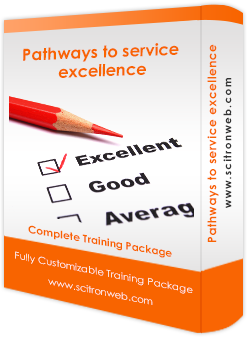This fact sheet focuses on the standard model of marketing planning endorsed by several writers in the field. The model contains formalised procedures, although the degree to which these are followed will depend on the culture and requirements of the organisation.
The discipline of marketing planning has been widely debated. Depending on their standpoint, academics have defended the standard textbook model or proposed alternative versions. McDonald, one of the principal writers in the field, in his article Ten barriers to marketing planning, acknowledges that "marketing planning is still the most enigmatic of all the problems facing management."
Marketing Planning Definition
"Marketing planning is simply a logical sequence and a series of activities leading to the setting of marketing objectives and the formulation of plans for achieving them." McDonald, as above.
Advantages of formalised Marketing Planning Procedures
- They encourage a rational approach to making business decisions
- Everyone follows the same strategy thus reducing potential conflicts, misunderstandings and operational difficulties
- They allow senior management to set out marketing strategy while leaving the day-to-day implementation to junior management
- They help to highlight areas you might otherwise miss
Disadvantages of formalised Marketing Planning Procedures
- They form a complex process which needs basic knowledge and skills
- They are time consuming and therefore costly to construct and follow
- There is a loss of flexibility for firms composed of small business units
- They can tend to take over and become an end in themselves
Action Steps for creating a Marketing Plan
1. Set strategic objectives
These have been traditionally set by top management although current practice is to employ more democratic processes involving the key stakeholders if not all the staff. They are not usually within the brief of the market planner alone. They must be kept firmly in mind and the strategies and action plans drawn up must be broadly in line with them. The market planning process can't go forward without them. The written plan should include a copy of the strategic objectives and the organisation's mission statement.
2. Carry out a marketing audit
This process enables a company to analyse and understand the environment in which it operates. It is the key to the SWOT analysis, the next stage in the marketing planning process. It is carried out in two parts: the external audit and the internal audit. The external audit should cover the business and economic environment, the market and the competition; this should examine the important trends which have affected and which will be affecting the market and the industry. It also involves searching questions about competitors and customers, now and in the future. The internal audit should concentrate on the planner's own company, its operational efficiency and service effectiveness, its key skills, competences and resources, its products / services and the 'core' business it is in.
3. Carry out a SWOT analysis
This is a summary of the audit under the headings Strengths, Weaknesses, Opportunities and Threats and should be included in the final written plan. Strengths and weaknesses refer to the company and its internal environment while opportunities and threats are external factors over which the company has no control but which it must anticipate, evaluate and try to exploit. Only key data should be included.
4. Make assumptions
These assumptions are the strategic drivers of the marketing plan and they may relate to economic, technological or competitive factors. Assumptions should be based on accurate information and sensible estimates of what can be achieved in the light of past performance.
Sound information is problematic because the pace of change is making the future discontinuous from the past. Coming up with viable and challenging assumptions involves creative, lateral thinking and breaking with the past. Only a few major assumptions should be included in the written marketing plan.
5. Set marketing objectives
This is the central step in the marketing planning process because the setting of achievable and realistic objectives is based on the analysis of the marketing audit, while strategy decisions cannot be made without reference to objectives. Marketing objectives are concerned with which products are to be sold in which markets: it is important not to confuse objectives (what you want to do) with strategies (how you are going to do it). The objectives should be included in the written marketing plan.
6. Estimate expected results
Marketing objectives should be SMART: Specific, Measurable, Achievable, Realistic and Time-tabled So proper time management is a must. For example, "to gain a 6% share of the overall market" or "to achieve 600 customers by the end of the year". Terms such as "increase" or "maximise" should not be used unless they can be quantified.
7. Generate marketing strategies
These are the broad methods by which the marketing objectives will be achieved and they describe the means of doing so within the required time. They are generally referred to as the marketing mix or as the four Ps: Product - what are its benefits to the customer; Price - how it is priced to attract the right, or the appropriate customer base; Place - who are those customers; Promotion - how may they be reached. They should appear in the written marketing plan.
8. Define programmes
The general strategies must be developed so that they have their own programmes or action plans. The combination of these plans and their relative importance will depend on the company. A large company with several different functions or departments may have several plans covering advertising, sales promotion, pricing and so on. Other companies may have one plan, for example, a product plan embracing all four Ps. Details of the programmes should be included in the written marketing plan.
9. Communicate the plan
Everyone should understand the plan. It is advisable to make a presentation of it rather than to circulate written copies. If the plan is not effectively communicated, it will fail. Proper communication skills are essential.
10. Measure and review progress
The plan should be monitored as it progresses. Make sure the measures you collect are meaningful to the success of the plan. If circumstances change, it should be revised to take advantage of unforeseen opportunities or to counter unforeseen threats. Details of how this should be done need to be included in the written plan and should relate directly to stages 4-9 above.
Dos and don'ts of proper marketing planning
Do
- Be clear on the organisation's strategic objectives
- Adjust the plan to suit the size, culture and circumstances of the organisation
- Consult on and communicate the plan
- Be aware that it is a time-consuming exercise
Don't
- Confuse objectives (what you want to achieve) with strategies (how you are trying to achieve them)
- Neglect to analyse information carefully and spend too long on projecting future markets from historical data
- Forget the plan is a means to achieve objectives, not a rigid control mechanism
- Let the planners alter the shape of the objectives




















